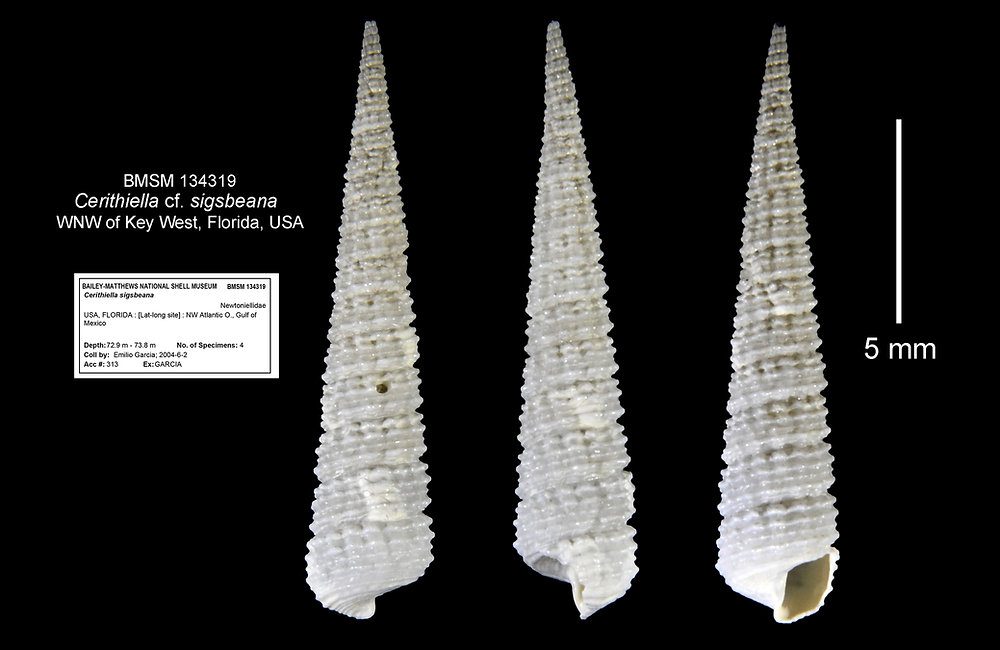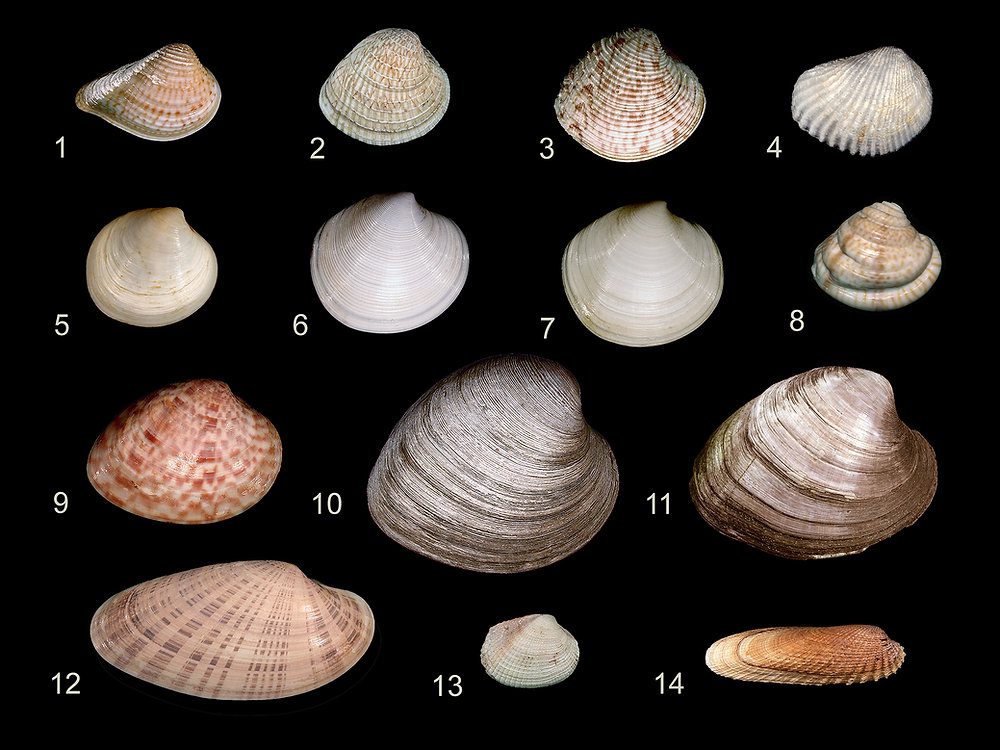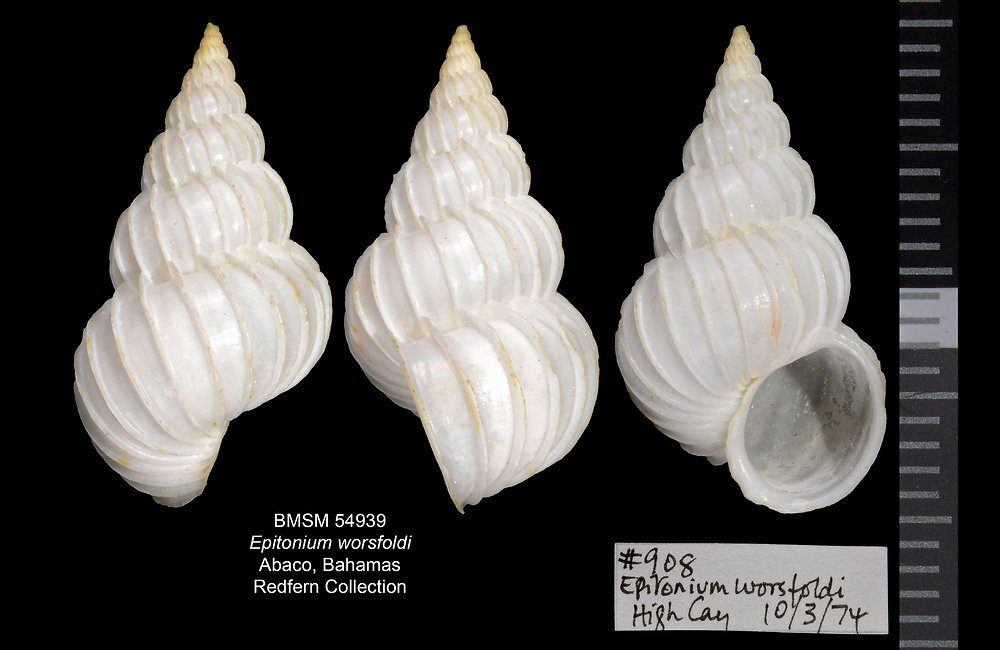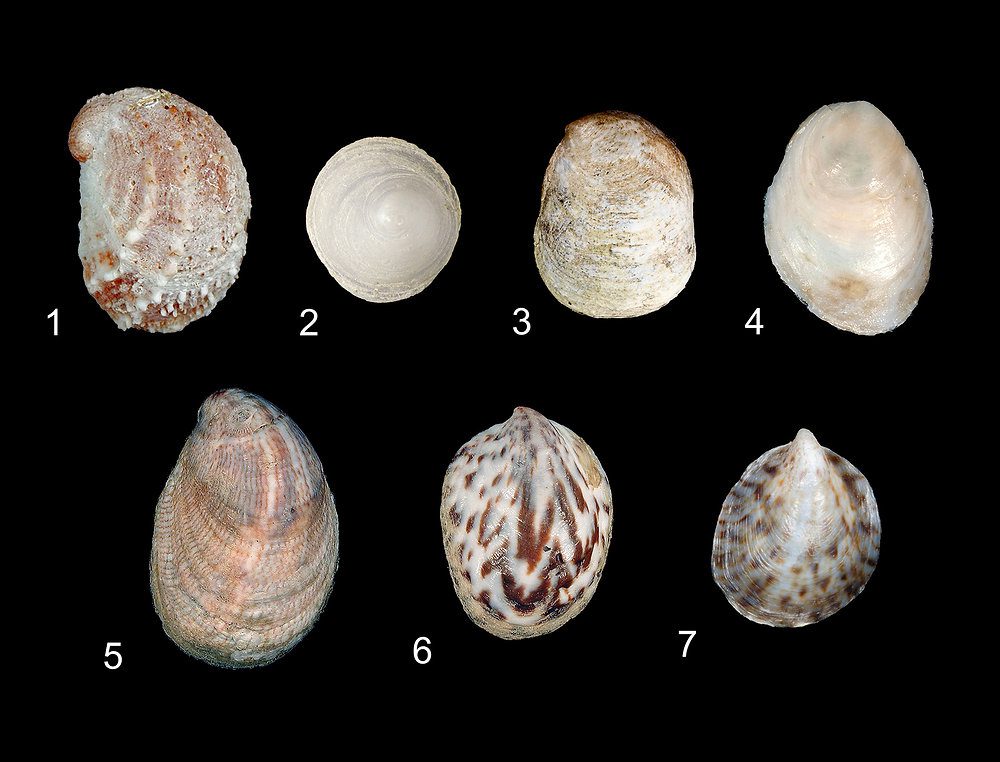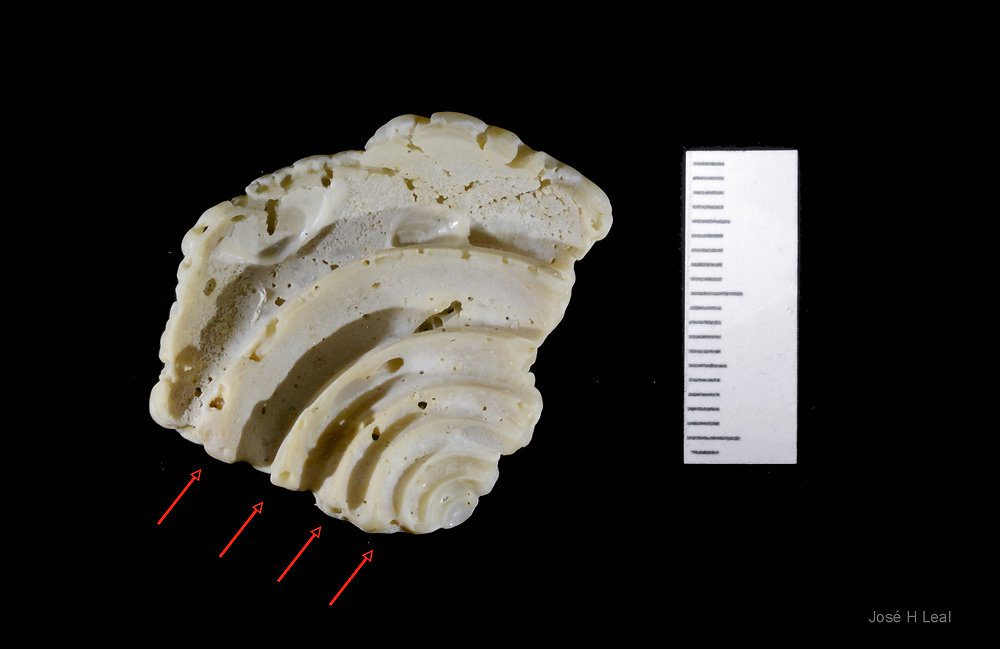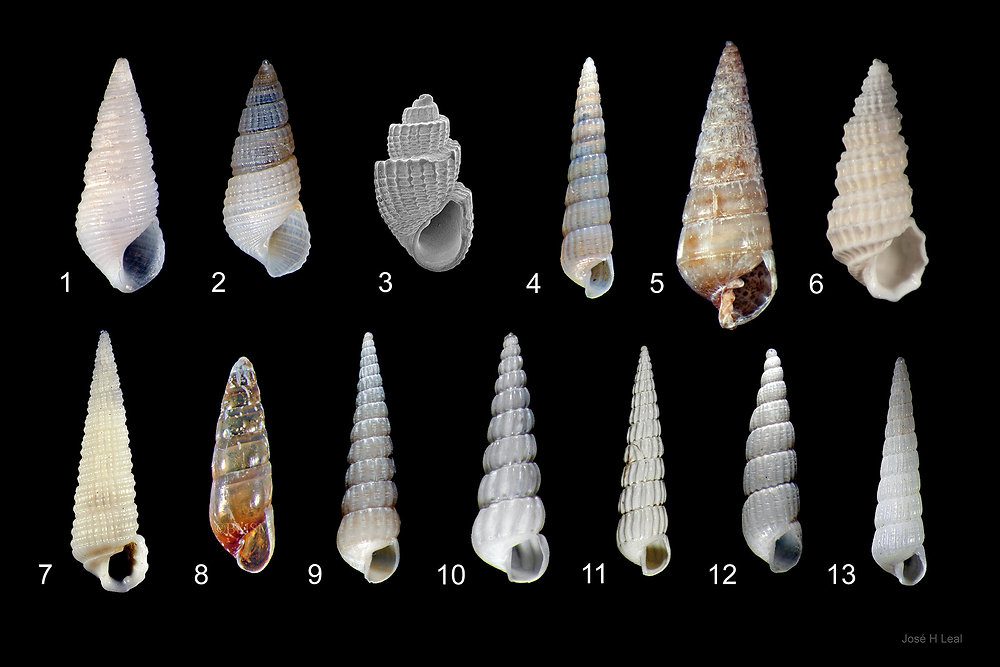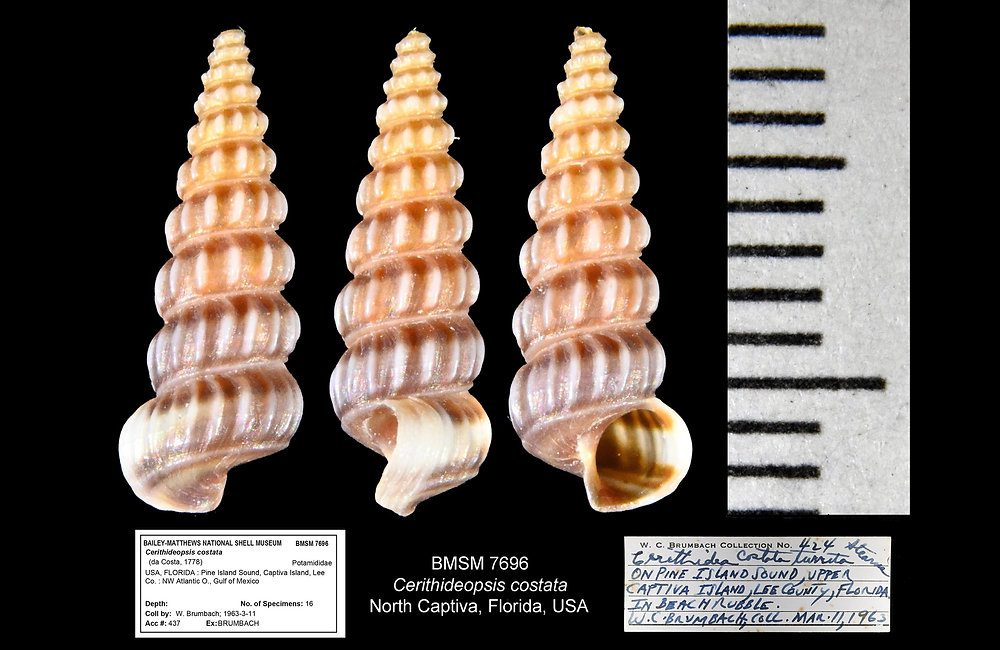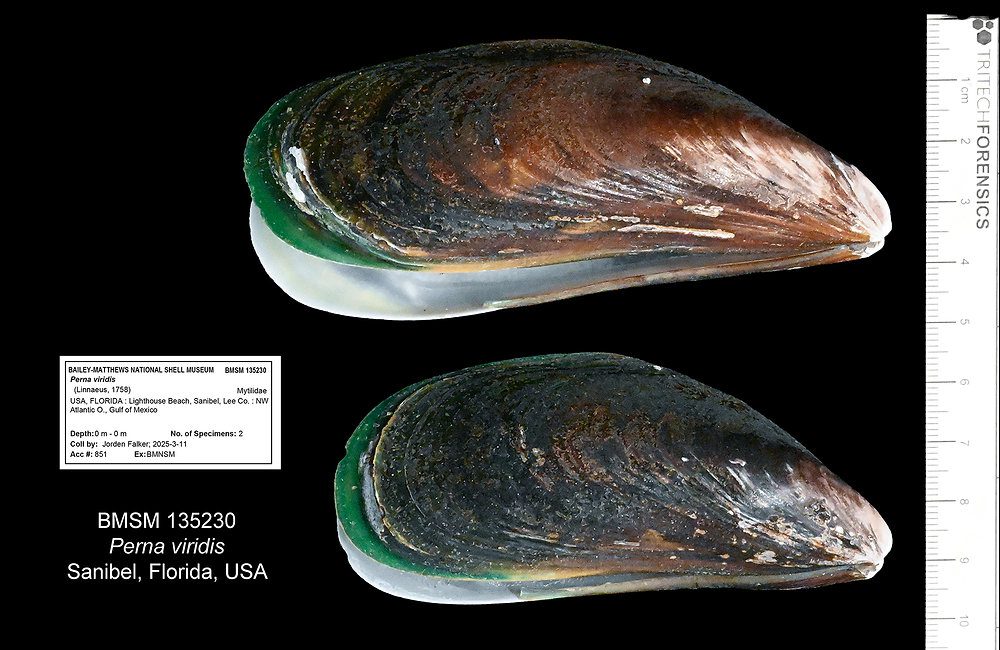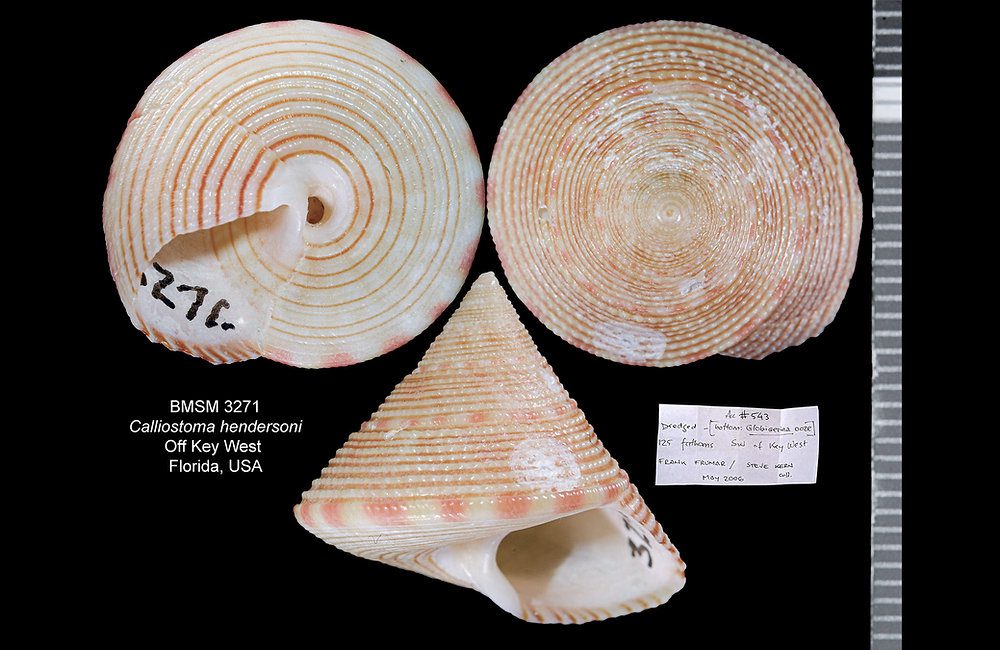
Shell of the Week: The Henderson’s Top Snail
Calliostoma hendersoni reaches 23 mm (a little less than an inch) in diameter. As with many other deep-water species of top snails (family Calliostomatidae) from the western Atlantic, this one has a very elegant shell. The base has reddish-brown spiral lines against a cream-colored background, a narrow but deep umbilicus, and the spire presents a slightly concave profile in lateral view. Most distinctively, Henderson’s Top Snail has a series of relatively large spots along the shell periphery (the outermost shell “edge”). The species lives in moderately deep water: this specimen…
